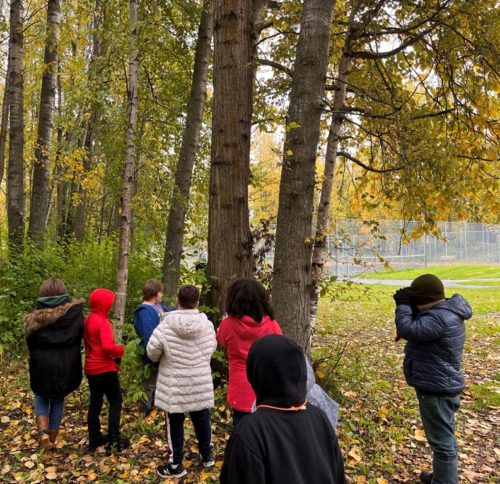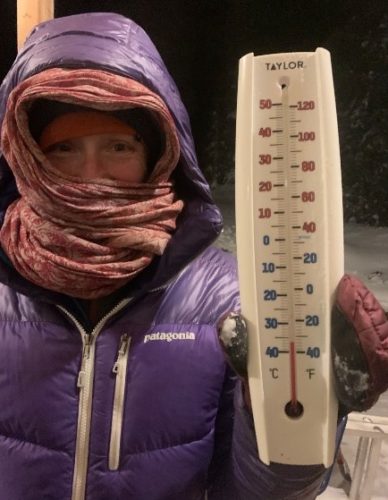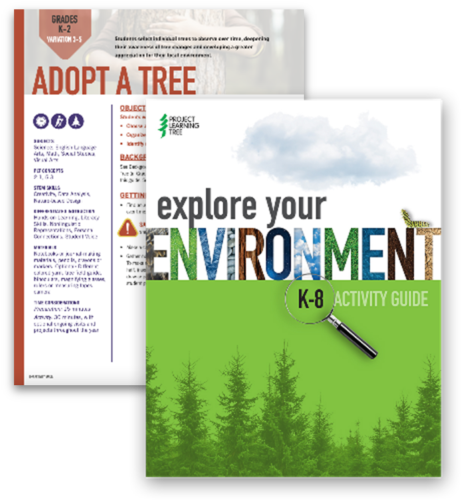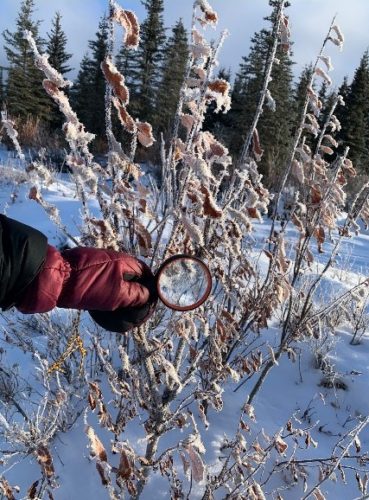With many benefits of outdoor learning, the winter environment offers abundant learning opportunities for preschoolers and high schoolers alike. How do you make the most of outdoor activities for kids during the colder months? Molly Gillespie, Alaska’s PLT Coordinator, recently shared with us some tips for teaching outdoors in the winter.
1. Make It a Habit!
If you’re new to taking students outdoors to learn, the first step is normalizing using outdoor spaces for learning. Establish the outdoors as an extension of the classroom rather than only as a space for playing. Set norms for learning outdoors and create a space dedicated to learning on your school ground or a nearby park. That can be a simple spot, like sitting under a big tree, where you always start the lesson to creating your own outdoor classroom.
If possible, start taking students outdoors early in the school year before it gets colder. Is it already cold where you work? No worries. Now is always a good time to start! Begin with short sessions and activities until you and the students are more used to teaching and learning outdoors. You’ll also want to establish a set frequency (weekly, monthly, etc.) so students know what to expect.
For this to be successful, it’s key not to substitute recess and other unstructured free time with outdoor learning sessions and have patience while students get used to this new way of learning.
We’ve shared more ideas for making this a habit in our “Baby, It’s Cold Outside” webinar.
2. Be Prepared
Dress for the weather, allow time for students to get dressed before heading outdoors, and make sure they have enough layers to stay warm.
Being outdoors in small groups is much easier than with a larger group, so enlist parents, school staff, and community volunteers to help!
Plan activities that allow for movement and don’t require writing. Allow the outdoor time to be for observation (and recording through photo and video) and take students back inside for writing, classwork, and sharing.
For more ideas to ensure students have enough clothes and how to create an “outdoor kit”, check out our webinar (Chapter: Be Prepared) and this great article, Why Teach Outside in Winter?
3. Observe Natural Phenomenon
Being outdoors in the cold for extended periods of time can be challenging. An effective strategy is to start with prompts indoors to encourage inquiry, questioning, and investigation, and then take students outdoors to observe.
You can use three simple prompts to invite students to observe natural objects:
- I notice… – Encourage a sense of inquiry where students to use their senses (even taste, if that’s safe!) to make observations.
- I wonder… – Encourage a sense of investigation that is student-led.
- It reminds me of… – Encourage a sense of personal connection between students and the nature around them.
You can also practice phenology – the science of exploring and recording the weather and how plants and animals respond to that weather.
 PLT’s Adopt a Tree activity from the Explore Your Environment: K-8 Activity Guide is an excellent activity to start with to observe changes over time. Or you can lead these winter-themed STEM activities.
PLT’s Adopt a Tree activity from the Explore Your Environment: K-8 Activity Guide is an excellent activity to start with to observe changes over time. Or you can lead these winter-themed STEM activities.
Want to learn more?
Find an in-person or online professional development event offered in your state!
The Baby, It’s Cold Outside: Leading Outdoor Learning Experiences (Even When it’s Cold) webinar, presented by Project Learning Tree and hosted by Green Teacher, explores these ideas and strategies in more depth.



